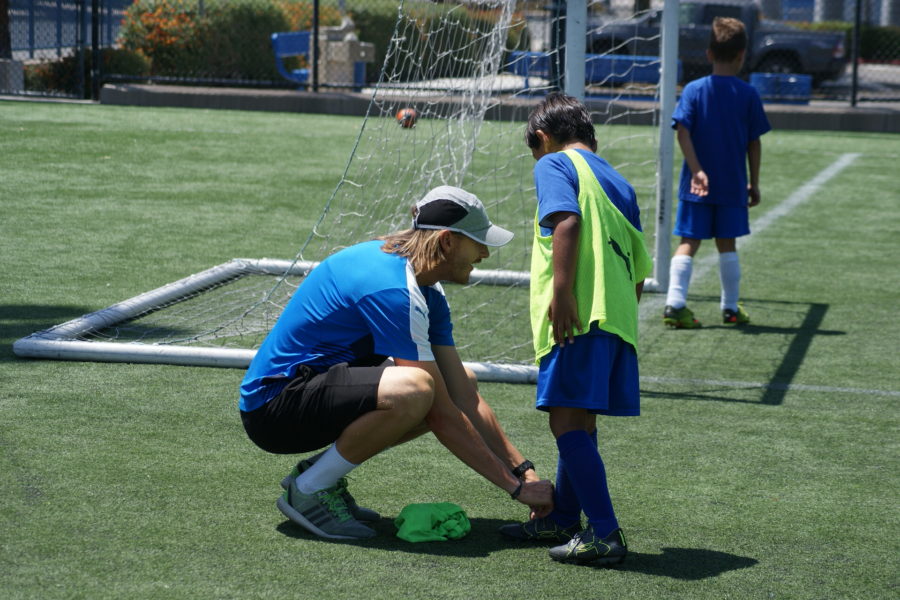On Thursday, March 30th, ESPN's Jeff Carlisle reported that a class-action lawsuit against the MLS Players Union by three youth clubs where U.S. Natio
On Thursday, March 30th, ESPN’s Jeff Carlisle reported that a class-action lawsuit against the MLS Players Union by three youth clubs where U.S. National Team players Clint Dempsey, Michael Bradley and DeAndre Yedlin played as children has been dismissed by order of the U.S. District Court Eastern District of Texas, Sherman Division.
This is the latest in a serious of flash-points between the youth clubs Crossfire Premier, the Chicago Sockers, and the Dallas Texans against the MLS Players Union. The lawsuit was initially filed in July of 2016 and at the core of the conflict is a dispute as to whether or not youth clubs in the United States which develop players who eventually become professionals are eligible for monetary incentives in the form of training compensation and solidarity payments, as stipulated by FIFA’s Regulations on the Status and Transfer of Players (RSTP) policy.
Historically, the United States Soccer Federation has not supported domestic youth clubs collecting these Training Compensation fees, citing U.S. law. The youth clubs pushing for change though point at FIFA’s internationally accepted standard of incentives for youth clubs to groom players into professionals. The history and logic behind the advent of RSTP is complex, but the good people at ESPN have detailed the complexity behind the practice.
This excerpt sums up the gist of what RSTP is:
The advent of RSTP and how it works
The U.S. soccer system finds itself in this predicament as a result of two legal decisions. One was the Bosman decision of 1995, which allowed players in the European Union who were at the end of their contracts to move anywhere without a transfer fee being paid.
This put clubs at the player development end of the soccer food chain in a bind. How would they be compensated when a player left if they could no longer charge a transfer fee? In 2001, FIFA, UEFA and the European community agreed upon a framework that included the solidarity payments and the payment for training and development costs in a bid to solve this issue.
The way it works is that when a soccer player signs his first professional contract, the pro club is obligated to pay training and development costs to every club that developed that player between the ages of 12 and 21. Additionally, training and development costs will be paid each time the player is transferred between clubs of two different associations until the end of the season of his 23rd birthday.
“Solidarity payments” come into play when a player transfers to a club before the expiration of his contract. Five percent of the total compensation, not including training costs, is to be allocated to the club or clubs that developed the player. This is spelled out in Articles 20 and 21 in FIFA’s regulations on the status and transfer of players (RSTP), as well as Annex 4 and 5 of that document.
While there are only three youth clubs leading the charge for adopting FIFA’s RSTP policy, the ultimate ruling would set a precedent that would affect all youth soccer clubs across the country. At a time when more and more youth clubs are launching “senior teams” in amateur and aspiring professional league like the National Premier Soccer League and the USL’s Premier Development League, securing funding from the development and sale/transfer of players would dramatically shift the status quo of the competitive youth soccer community.
Competitive youth soccer in America has long been accused of being flawed due to the “pay-to-play” model which can be prohibitive for players from lower economic backgrounds whose families can’t afford the club fees, tournament fees, uniform fees, and all the other financial commitments that go with playing “travel soccer”. Conceivably, with more money flowing into clubs that are successful in developing elite talent, the clubs can lower or even remove fees altogether and in turn, pave the way for the country’s truly talented players to shine, regardless of their parent’s ability to contribute financially.
The logical progression here is that by expanding the access to elite soccer training and competition, and incentivizing clubs to focus on the development of professional players, we will see a rise in the quantity of quality players who are competitive at a worldly level.
While the ruling on Thursday of the U.S. District Court Eastern District of Texas to dismiss the lawsuit is relevant, there is also a separate case in front of FIFA’s Dispute Resolution Chamber that has yet to be ruled on. Depending on how FIFA’s DRC rules, this saga could rumble on for quite some time.
If you’re looking for pre-settlement funding for a lawsuit, you could consider a loan to help you with this.
Landon Donovan joined me on the SoccerNation Podcast to discuss his views on training compensation and solidarity payments, plus the latest news with SoccerCity SD.
[soundcloud url=”https://api.soundcloud.com/tracks/315518325″ params=”auto_play=false&hide_related=false&show_comments=true&show_user=true&show_reposts=false&visual=true” width=”100%” height=”450″ iframe=”true” /]
What do you think? Should American clubs who develop professional players be allowed to accept monetary compensation? Let us know in the comments below!
